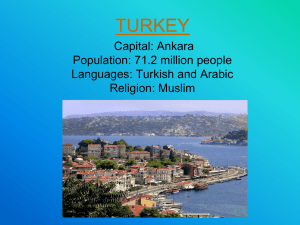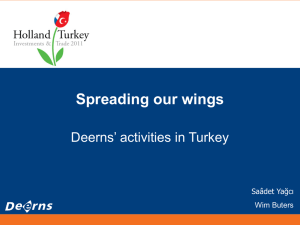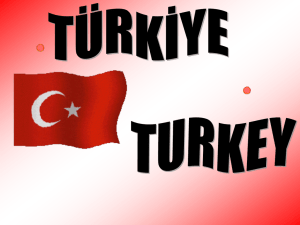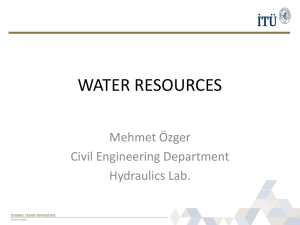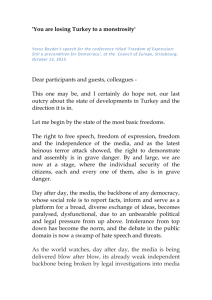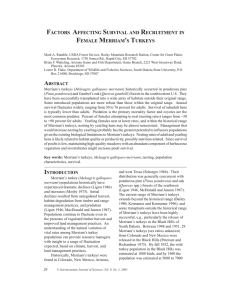Lesson Plan: Merriam`s Turkey (Word doc)
advertisement
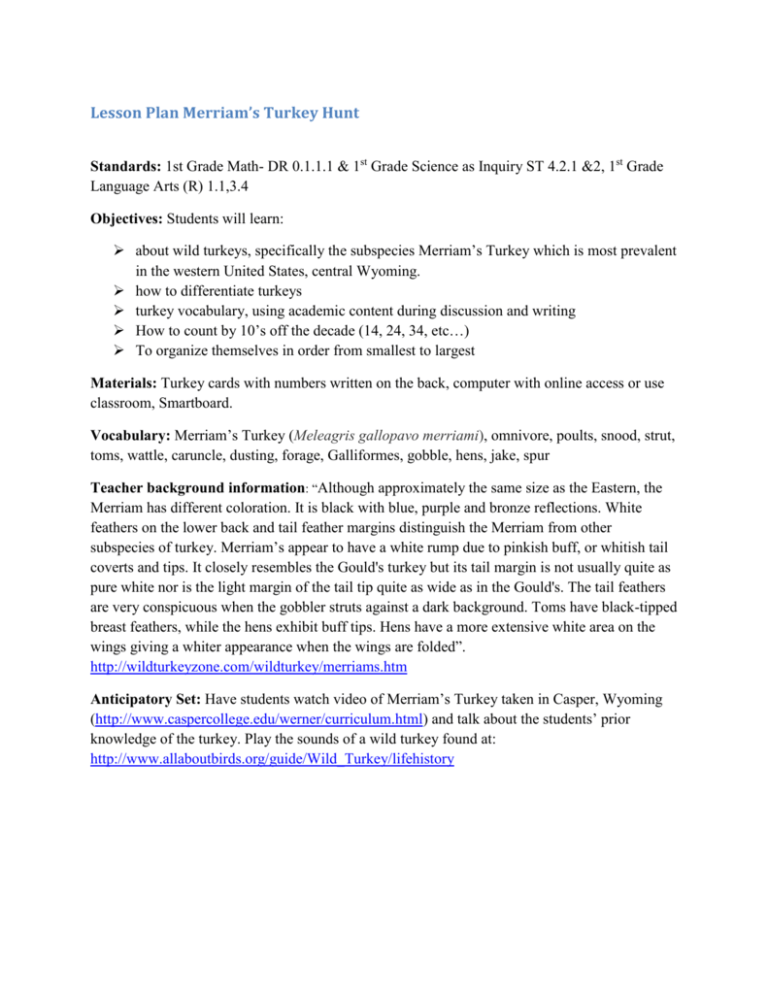
Lesson Plan Merriam’s Turkey Hunt Standards: 1st Grade Math- DR 0.1.1.1 & 1st Grade Science as Inquiry ST 4.2.1 &2, 1st Grade Language Arts (R) 1.1,3.4 Objectives: Students will learn: about wild turkeys, specifically the subspecies Merriam’s Turkey which is most prevalent in the western United States, central Wyoming. how to differentiate turkeys turkey vocabulary, using academic content during discussion and writing How to count by 10’s off the decade (14, 24, 34, etc…) To organize themselves in order from smallest to largest Materials: Turkey cards with numbers written on the back, computer with online access or use classroom, Smartboard. Vocabulary: Merriam’s Turkey (Meleagris gallopavo merriami), omnivore, poults, snood, strut, toms, wattle, caruncle, dusting, forage, Galliformes, gobble, hens, jake, spur Teacher background information: “Although approximately the same size as the Eastern, the Merriam has different coloration. It is black with blue, purple and bronze reflections. White feathers on the lower back and tail feather margins distinguish the Merriam from other subspecies of turkey. Merriam’s appear to have a white rump due to pinkish buff, or whitish tail coverts and tips. It closely resembles the Gould's turkey but its tail margin is not usually quite as pure white nor is the light margin of the tail tip quite as wide as in the Gould's. The tail feathers are very conspicuous when the gobbler struts against a dark background. Toms have black-tipped breast feathers, while the hens exhibit buff tips. Hens have a more extensive white area on the wings giving a whiter appearance when the wings are folded”. http://wildturkeyzone.com/wildturkey/merriams.htm Anticipatory Set: Have students watch video of Merriam’s Turkey taken in Casper, Wyoming (http://www.caspercollege.edu/werner/curriculum.html) and talk about the students’ prior knowledge of the turkey. Play the sounds of a wild turkey found at: http://www.allaboutbirds.org/guide/Wild_Turkey/lifehistory Procedure-After completing the anticipating set1. Write the vocabulary list on the board and define them as a class discussion. Print out the attached turkey anatomy diagram and hang by the vocabulary words. 2. Have a class discussion about how to identify Merriam’s Turkeys (see above). Ask students the turkey questions. Ex: what is the difference between a jake and a tom? What does Galliforme mean? What is the spur useful for? Etc… 3. Print out copies of the turkey picture, enough for every student. On the back of each turkey, write one of the numbers. 4, 14, 24, 34, 44, 54, 64, 74, 84, 94, 104, 114, 124, 134, 144, 154, 164, 174, 184, 194, 204, 214, 224, 234, 244, 254, 264, 274, 284. 4. Before students go to recess, explain that when they return, there will be a turkey hunt in the classroom. Explain to them that each student is to find one paper turkey and when they have found one, to sit back in their chair and wait patiently for everyone to find one (hide the turkey pictures while the students are at recess. 5. After everyone has found their turkeys have them turn over the turkey papers and look at their numbers. 6. Next, have the students form a line with the smallest number (4) at the front of the line and stand in order to the largest. 7. After the students have completed this task correctly (there may be a few out of order) talk about their strategy regarding lining up and if there was an easier way. They can redo the activity if necessary. 8. Finally, give the students a math quiz about counting off the decade. 9. When they have finished their quiz, they can complete a turkey drawing or the attached crossword. Follow-up Enrichment: Take the students to the Werner Wildlife Museum to view their turkey specimens. http://mustards-and-marmalades.blogspot.com/2009_11_01_archive.html Make copies of these pictures and cut out enough for each child to have one. Number the backs of the pictures in a sequential order for math line activity.
